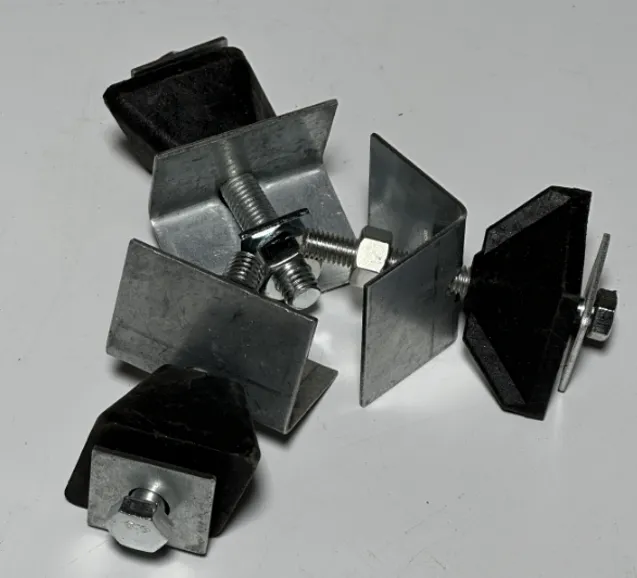loading...
- No. 9, Xingyuan South Street, Dongwaihuan Road, Zaoqiang County, Hengshui, Hebei, China
- admin@zjcomposites.com
- +86 15097380338
- Welcome to visit our website!
sectional tanks
Understanding Sectional Tanks A Comprehensive Overview
Sectional tanks have become a vital component in various industries and applications, largely due to their versatility and efficiency in storing liquid materials. From water treatment facilities to industrial processes and even residential water supply, sectional tanks offer a multitude of benefits that make them a preferred choice for many. This article delves into what sectional tanks are, their advantages, applications, and considerations for selecting the right tank for your needs.
What are Sectional Tanks?
Sectional tanks, as the name implies, are tanks constructed from multiple sections or panels. These panels are typically made from materials such as fiberglass, steel, or reinforced plastic and are designed to be bolted together at the installation site. This modular approach allows for enhanced transportability since the tanks can be manufactured in smaller sections and assembled on location, making them ideal for both large-scale and confined space applications.
Advantages of Sectional Tanks
One of the primary advantages of sectional tanks is their adaptability. Because they come in customizable sizes and shapes, they can fit a wide range of spaces and storage requirements. This makes them suitable for various environments, including industrial facilities, commercial properties, and residential properties.
Another significant benefit is the ease of installation. Unlike traditional tanks, which may require extensive groundwork and heavy machinery for transportation, sectional tanks can often be assembled quickly with minimal tools. This reduces labor costs and downtime, enabling facilities to ramp up operations faster.
Additionally, sectional tanks are designed for durability
. Many are constructed to withstand pressure, corrosion, and adverse weather conditions, making them suitable for outdoor installations. Their resilience also means they can handle a variety of liquids, including potable water, wastewater, and chemical solutions, without compromising structural integrity.Applications of Sectional Tanks
sectional tanks

Sectional tanks have a plethora of applications across different industries. In the water treatment sector, they are commonly used for the storage of potable water and wastewater. Their large capacity options can cater to municipal needs, providing communities with a reliable supply of clean water.
In industrial settings, sectional tanks are employed for bulk storage of chemicals, fuels, and other liquids essential for manufacturing processes. Their modular nature allows companies to expand their storage capabilities without significant renovations to the existing facility.
Residential applications include rainwater harvesting and emergency water storage. Homeowners are increasingly looking to sectional tanks as a sustainable solution for water conservation, allowing them to capitalize on seasonal rains and reduce dependence on municipal water systems.
Considerations for Choosing Sectional Tanks
When selecting a sectional tank, several factors must be considered to ensure the optimal fit for your requirements. First, assess the size and capacity needed based on your anticipated liquid storage demands. It’s crucial to account for future growth or potential increases in demand to avoid outgrowing your installation.
Material choice is also critical. Different materials offer varying degrees of durability, corrosion resistance, and insulation properties. For example, fiberglass tanks may be lightweight and resistant to corrosion, while steel tanks provide robustness for more demanding environments.
Installation location and environmental conditions should be assessed as well. Make sure the site can accommodate the weight and dimensions of the tank, and consider any factors such as temperature extremes that could affect the tank's performance over time.
Conclusion
Sectional tanks represent an innovative solution for liquid storage needs across a multitude of settings, combining flexibility, ease of installation, and robust durability. Their modular design not only allows them to be tailored to specific requirements but also facilitates efficient transportation and assembly. As industries continue to evolve and seek reliable storage solutions, sectional tanks will undoubtedly play an essential role in meeting these demands. With careful consideration of capacity, material, and environmental factors, organizations and homeowners alike can leverage the benefits of sectional tanks to achieve their liquid storage objectives effectively.
-
The Rise of FRP Profiles: Strong, Lightweight, and Built to LastNewsJul.14,2025
-
SMC Panel Tanks: A Modern Water Storage Solution for All EnvironmentsNewsJul.14,2025
-
GRP Grating: A Modern Solution for Safe and Durable Access SystemsNewsJul.14,2025
-
Galvanized Steel Water Tanks: Durable, Reliable, and Ready for UseNewsJul.14,2025
-
FRP Mini Mesh Grating: The Safer, Smarter Flooring SolutionNewsJul.14,2025
-
Exploring FRP Vessels: Durable Solutions for Modern Fluid HandlingNewsJul.14,2025
-
GRP Structures: The Future of Lightweight, High-Performance EngineeringNewsJun.20,2025
